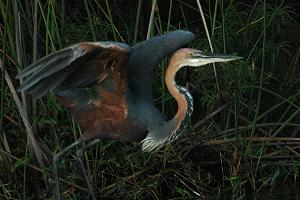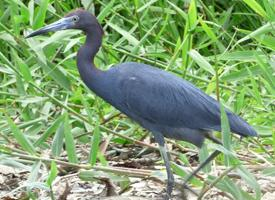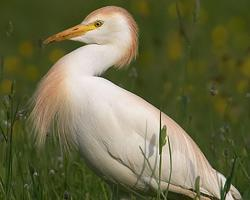
Poids et mesures
| Hauteur au garrot | de 120 à 152 cm |
|---|---|
| Longueur | 150 cm |
| Poids | 4,4 kg |
| Envergure des ailes | de 185 à 230 cm |
Description de l'animal
The Goliath Heron (Ardea goliath) stands as a magnificent spectacle among the avian world, holding the title of the world's largest heron. This colossal bird, with its striking appearance and imposing size, inhabits the reed beds and shallow waters of sub-Saharan Africa, extending its range to parts of Southwest and South Asia. It is a creature of grandeur and elegance, seamlessly blending power with grace in its natural environment.Characterized by its towering stature, the Goliath Heron can reach heights of up to 150 cm (59 inches) and boasts a wingspan that can extend over 230 cm (7 feet 7 inches). Its long, powerful legs, designed for wading through shallow waters, support its hefty body, which can weigh up to 5 kg (11 lbs). The plumage of the Goliath Heron is a beautiful mosaic of slate gray, chestnut, and white, with fine black detailing. Its head is adorned with a striking black cap, and it sports a distinctive black stripe that extends from its eye to the back of its neck. The bird's neck is long and sinuous, culminating in a dagger-like bill that is perfectly adapted for its piscivorous diet.
The diet of the Goliath Heron primarily consists of fish, but it will also consume a variety of aquatic creatures, including frogs, small mammals, and even juvenile crocodiles on occasion. This heron is a master of patience and precision. It hunts by standing motionless at the water's edge or by slowly wading through shallow waters, ready to strike swiftly at unsuspecting prey with its formidable bill.
Breeding behaviors of the Goliath Heron are as solitary as its general lifestyle. The bird is known to be territorial, with pairs nesting alone, away from others. Their nests are large platforms of sticks, constructed in trees or reeds near water bodies. The female typically lays 2 to 4 eggs, which both parents then incubate. The chicks, once hatched, are dependent on their parents for food and protection until they are ready to fledge.
The Goliath Heron's call, a deep, booming "kowoor", echoes across its habitat, signaling its presence. This vocalization plays a role in communication, especially during the breeding season, serving as a means to establish territory and attract mates.
Despite its awe-inspiring presence, the Goliath Heron faces threats from habitat destruction, pollution, and human disturbance, leading to a decline in some of its populations. Conservation efforts are essential to ensure the survival of this majestic bird, allowing future generations to witness its grandeur in the wild.
In summary, the Goliath Heron is a symbol of the wild, untamed beauty of the wetlands and waterways it inhabits. With its unparalleled size, striking appearance, and fascinating behaviors, it captures the imagination of all who are lucky enough to observe it, reminding us of the wonders that nature holds.
Animaux similaires
Nouvelles photos d'animaux
Top 10 des animaux
- Dolphin gull (Leucophaeus scoresbii)
- Diana monkey (Cercopithecus diana)
- Moustached guenon (Cercopithecus cephus)
- Galápagos tortoise (Geochelone nigra complex)
- Japanese macaque (Macaca fuscata)
- Stone loach (Barbatula barbatula)
- Russian tortoise (Testudo horsfieldii)
- Greek tortoise (Testudo graeca)
- Common flying dragon (Draco volans)
- Vendace (Coregonus albula)


